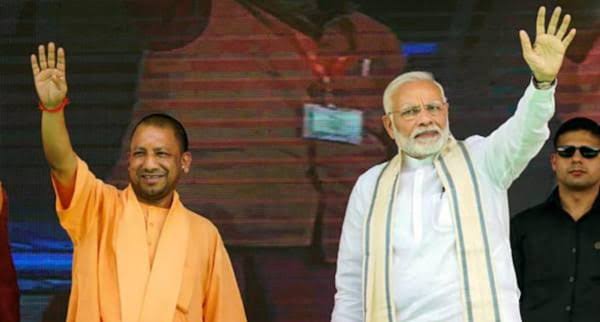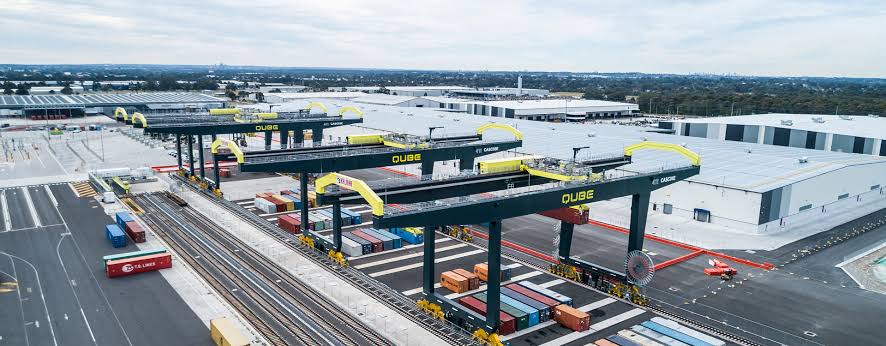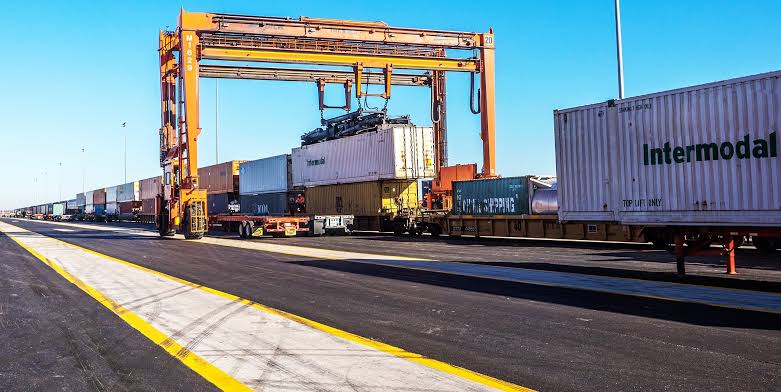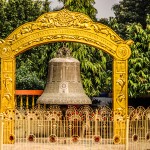One of the world's oldest cities that has been inhabited continuously, Varanasi is about to undergo a huge renovation that will further solidify its position as a popular tourist and cultural destination. The city, which is well-known for its historic temples, ghats, and lively spiritual environment, will soon become a modern transportation center when an intermodal terminal hub is developed. This project is a part of the Indian government's bigger goal to improve the nation's transportation network; comparable hubs are also being planned for Nagpur, Katra, and Tirupati. The construction of these hubs will combine several transportation options, such as buses, trains, ropeways, and canals, to offer seamless connectivity for both passengers and cargo.
The Goals for the Multimodal Terminal Hub in Varanasi
It is envisaged that Varanasi's Intermodal Terminal Hub will be a cutting-edge establishment that transforms how people travel both inside and outside of the city. The principal aim of this project is to provide a cohesive transportation network that facilitates seamless and convenient transitions between various modes of transportation for passengers. Presently, Varanasi welcomes more than ten million visitors a year, many of whom find it difficult to get around the city since it lacks an efficient transit infrastructure. By providing a one-stop shop for all travel requirements, the new center seeks to address these problems and improve the experience for both visitors and residents.

One of Varanasi's busiest locations, Cantt Railway Station, will be strategically close to the hub. This location is perfect because it's already a significant rail junction, and the Intermodal Terminal will make it the hub of the city's transportation system. In order to construct this cutting-edge facility, the National Highways Logistics Management Limited (NHLML), a division of the National Highways Authority of India (NHAI), has asked the railroads for land. Varanasi is anticipated to undergo a significant transformation as a result of the project, which will establish the city as a model of integrated urban mobility in India.
Important Elements of the Intermodal Terminal Hub
Travelers will benefit from a number of amenities at the Varanasi Intermodal Terminal Hub that are intended to maximize efficiency and convenience. The hub's integration with the current and future transit networks in the city will be one of its most notable features. To facilitate seamless passenger movement between different transportation options, a foot overbridge is planned to connect the railway station, bus station, and ropeway station. It is anticipated that this seamless connectivity will greatly shorten travel times and enhance travelers' overall experience.
The hub will feature a new bus terminal and passenger complex in addition to the overbridge. There will be passenger reservation counters, a huge hotel, and an interpretive center within this complex. The hotel will accommodate both leisure and business guests and provide cozy lodging close to the transportation center. Visitors will have a better understanding of the significance of Varanasi and its numerous attractions by learning about the city's rich cultural and religious legacy from the explanation center.
The multi-level parking structure of the hub will be another significant element. Parking has become a significant problem in Varanasi due to the growing number of cars in the city, especially close to well-known tourist attractions. This issue will be resolved by the multi-level parking structure, which offers plenty of room for parking for both personal cars and taxis. The hub will also have a commercial complex, auto rickshaw stands, and designated taxi stands. Several retail stores will be housed in this commercial complex, providing passengers with a wide range of dining and shopping alternatives within the hub itself.
The Varanasi Intermodal Terminal Hub will be characterized by its modern amenities. As the importance of sustainable mobility grows, the facility will have EV charging stations. On-site auto repair shops will also be available, guaranteeing prompt resolution of any vehicle-related problems. The center will have dining options, emergency rooms, medical services, drinking water stations, eateries, and spotless restrooms for travelers. The hub will be equipped with ATMs, making banking services easily accessible.
Water fountains, botanical gardens, and landscape gardens will all be included in the hub's design to improve its visual attractiveness. These green areas will not only enhance the area's aesthetic appeal but also offer visitors a tranquil spot to unwind. All personnel and passengers will be safe and secure because CCTV cameras will be monitoring the entire facility round-the-clock.
Effects on Travel and Economic Development
The tourism industry in Varanasi is anticipated to be significantly impacted by the construction of the Intermodal Terminal Hub. Already a popular pilgrimage site, Varanasi draws millions of tourists each to its revered ghats and temples, most notably the Kashi Vishwanath Temple. But the city's outdated infrastructure has frequently been unable to handle the increase in visitors, which has resulted in congestion and practical difficulties. By offering a more planned and effective transit system, the new hub will solve these problems and make it simpler for visitors to see the city's attractions.
Among the hub's main advantages will be its capacity to link various forms of transportation, such as buses, trains, ropeways, and canals. For example, the proposed ropeway system will link Cantt Railway Station to popular tourist spots like Namoghat and the Kashi Vishwanath Temple. Travel times will be greatly shortened as a result, and tourists will find it easier to get around the city. Additionally, the hub will be connected to the Ganges River's inland waterways, offering residents and visitors another means to get around. This will encourage the usage of ecologically friendly transportation options while also improving the overall travel experience.

It is impossible to exaggerate the Intermodal Terminal Hub's economic significance. The hub is anticipated to strengthen the local economy by facilitating travel inside Varanasi and enhancing connections. A rise in tourism will drive up demand for services like lodging, dining, and shopping, opening up new markets and employment prospects. Additionally, the center will ease the flow of commodities, simplifying the process for regional companies looking to ship their items throughout the nation.
The idea behind the Intermodal Terminal Hub is a part of a bigger plan to develop an integrated and more effective transportation system throughout India. Currently, 87% of travelers in the nation depend on the road system, which presents difficulties when negotiating clogged highways and erratic public transportation. The construction of terminal infrastructure and public transit, like the Varanasi hub, will have a positive social and economic impact. People will be able to access jobs, education, and healthcare more easily, and travel times and costs will be decreased.
The More Comprehensive National Framework
As part of a trial project, the Intermodal Terminal Hub in Varanasi is being developed, along with three other cities: Katra, Nagpur, and Tirupati. These cities have all been carefully chosen due to their strategic significance and ability to gain from improved transportation infrastructure. For example, the Vaishno Devi temple, one of the most popular religious destinations in India, is located in Katra, a significant pilgrimage site. With an estimated cost of INR 500 crores, the Katra hub is now being built and will improve connection for the millions of pilgrims who visit the temple every year.
Situated in the geographic heart of India, Nagpur is another city scheduled to receive an Intermodal Terminal Hub. It is an important intersection for road and rail transportation. Nagpur's status as a major national center for logistics and transportation would be enhanced by the creation of a hub there. In a similar vein, enhanced transportation infrastructure in Tirupati, a significant pilgrimage center in southern India, would facilitate pilgrims' access to the world's richest and most visited temple, Tirumala Venkateswara Temple.
These pilot projects' success will open the door for the establishment of comparable hubs in other regions of India. The goal of the government's Intermodal Terminal Hub network is to improve transportation efficiency, lessen urban traffic, and encourage the use of public transportation. Additionally, these hubs will help the government achieve its more general objectives of lowering carbon emissions and advancing sustainable development.

Difficulties and Opportunities for the Future
There are several potential associated with the development of the Intermodal Terminal Hub in Varanasi, but there are drawbacks as well. Finding the land needed for the project will be one of the main obstacles. Land purchase can be a difficult and drawn-out process in densely populated areas like Varanasi, frequently including talks with several players. To prevent project delays, the government must make sure that the land acquisition procedure is managed effectively and openly.
Coordinating the numerous organizations and project stakeholders will be another difficulty. The railroads, local government agencies, and private contractors will all need to work together to create the Intermodal Terminal Hub. The timely and cost-effective completion of the project will depend on efficient collaboration and communication.
The future of the Varanasi Intermodal Terminal Hub appears bright in spite of these obstacles. When finished, the hub will become the benchmark for India's integrated transportation networks, providing other cities with a blueprint to imitate. Millions of travelers' travel experiences will be enhanced, and it will also support the region's economic development.
To make sure that the hub's advantages are widely distributed, it will be crucial for the government to interact with stakeholders and the neighborhood as the project advances. By accomplishing this, Varanasi's Intermodal Terminal Hub can establish itself as a model of how cutting-edge infrastructure can improve living conditions in one of the country's most ancient cities.
In summary, Varanasi's growth into a contemporary metropolitan center has advanced significantly with the construction of the Intermodal Terminal Hub. The hub will provide seamless connectivity for both passengers and cargo by combining many means of transportation, improving the effectiveness and enjoyment of travel.












